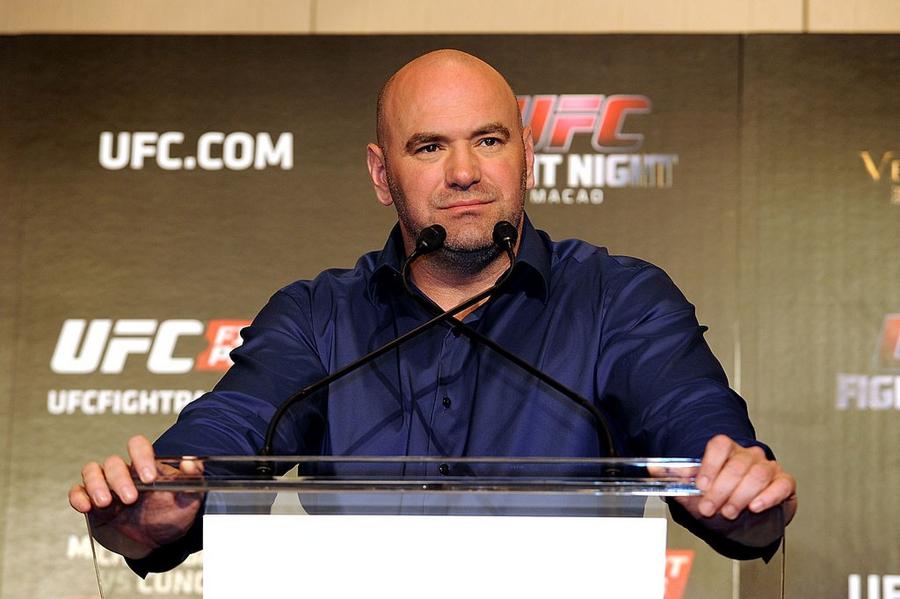For some, the brutality of mixed martial arts is a turnoff, but ever since the UFC debuted back in 1993, more and more fans have gravitated to it over the years. As its parent company, Zuffa, LLC, fought to change state laws, so that UFC events could be legally held in those states, more people became exposed to mixed martial arts.
With more exposure came more fans, and with more fans came an increase in pay-per-view buys, and finally, what Dana White and his partners got into the business for in the first place – more money.
According to Lorenzo Fertitta, CEO of Zuffa, business was especially good in 2015. Since Zuffa is a private company, they are not required to report earnings or even talk about profit margins, but Fertitta recently told a reporter in an interview with CNN that the company generated $600 million in revenue in 2015.

Photo by Jayne Russell/Getty Images
That is a significant increase over the $522 million generated in 2014, and a long way away from the $4.5 million that was generated back in 2001.
So, has the fight business become that good since 2001?
Yes, but it has been an uphill climb. Revenue doubled to $9 million in 2002, where it remained in 2003. The following year saw a nice increase (14.3 million in 2004), but the first significant increase came in 2005 when revenue ballooned to $48.3 million.
What happened? From the company's inception in '93 through 2004, they only held anywhere from a single event the first year to a high of seven in 2002. They dropped down to five the following two years, but 2005 saw the company hold the most it ever had in a calendar year (10), which also happened to be the company's first profitable year.
So was it really all about holding more UFC events? Yes and no.
More events do generate more revenue as the next few years proved. In 2006 they held 18 and had the company's first $100+ million year with $180 million in revenue. However, up through 2009 the number of events didn't vary greatly (2007-19 and 20 in 2008 and '09), but the amount of revenue did ($217 million in '07; $271 million in '08; and $339 million in '09).
It wasn't just about more fights. The company had to get better with how it did business. Signing the media rights deal with FOX was a serious step in the right direction. Now they had a partner to foot the production costs for events broadcast on the network, but it also opened up a whole new audience to the sport—fair weather fans who enjoyed it but never wanted to pay for it.
The number of events went from 24 in 2010 to 27 in 2011, the first year of the contract. Since then the number has increased to 31 ('12), 33 ('13), a high of 46 in 2014, and back down to 41 events last year. Revenue actually dropped from 2010 to '11 ($424 million to $360 million), but held fairly steady the next two years ($480 million in '12 and $483 million in '13) before hitting $522 million in 2014.
No one is saying how profitable the company is now (it's a private company so they don't have to), but as recently as 2005 the company was believed to be $44 million in debt. Estimates now have it worth anywhere from $1.65-3 billion.
So is the secret to success more fights and a better way of doing business?

Photo by Steve Marcus/Getty Images
It does help that the company has opened up a variety of revenue streams. The pay-per-view side of the business still generates the most money. The FOX deal is worth from $90-100 million a year over the seven-year life of the contract, and they now offer the UFC Fight Pass that gives fans access to exclusive content as well as the entire UFC library. Reebok has also been signed to a six-year, $70 million deal.
The most important aspect of the growth in revenue is the fighters of course. Not only are they becoming better trained and more skilled, but they have to stay healthy and actually fight (something that has been a problem in years past. Having marketable fighters like Ronda Rousey and Conor McGregor doesn't hurt revenue either.
As they continue to maximize all revenue streams and promote the best and most loved/hated fighters those streams are going to grow even more.
/2016/04/GettyImages-451133048-1.jpg)
/2016/03/GettyImages-512092216.jpg)
/2009/11/Dana-White.jpg)
/2017/09/GettyImages-132651973.jpg)
/2016/02/GettyImages-461454039.jpg)
/2017/11/GettyImages-814573690.jpg)
/2020/07/mlp.jpg)
/2009/11/Tim-Duncan.jpg)
/2010/01/GettyImages-183679600.jpg)
:strip_exif()/2020/06/taylor.png)
/2021/04/Sara-Gilbert.jpg)
/2010/05/Jaleel-White.jpg)
/2013/03/kellie.jpg)
/2019/03/Emmanuel-Macron.jpg)
/2010/03/Nicolas-Sarkozy.jpg)
/2022/10/Anne-Murray.jpg)
/2011/02/david-robinson-1.jpg)
/2022/02/Darius-McCrary.jpg)
/2020/03/kid-rock.jpg)
/2013/04/brian.jpg)
/2009/11/Axl-Rose.jpg)
/2025/03/Kelli-Ferrell.jpg)
/2020/03/kenny-rogers.jpg)